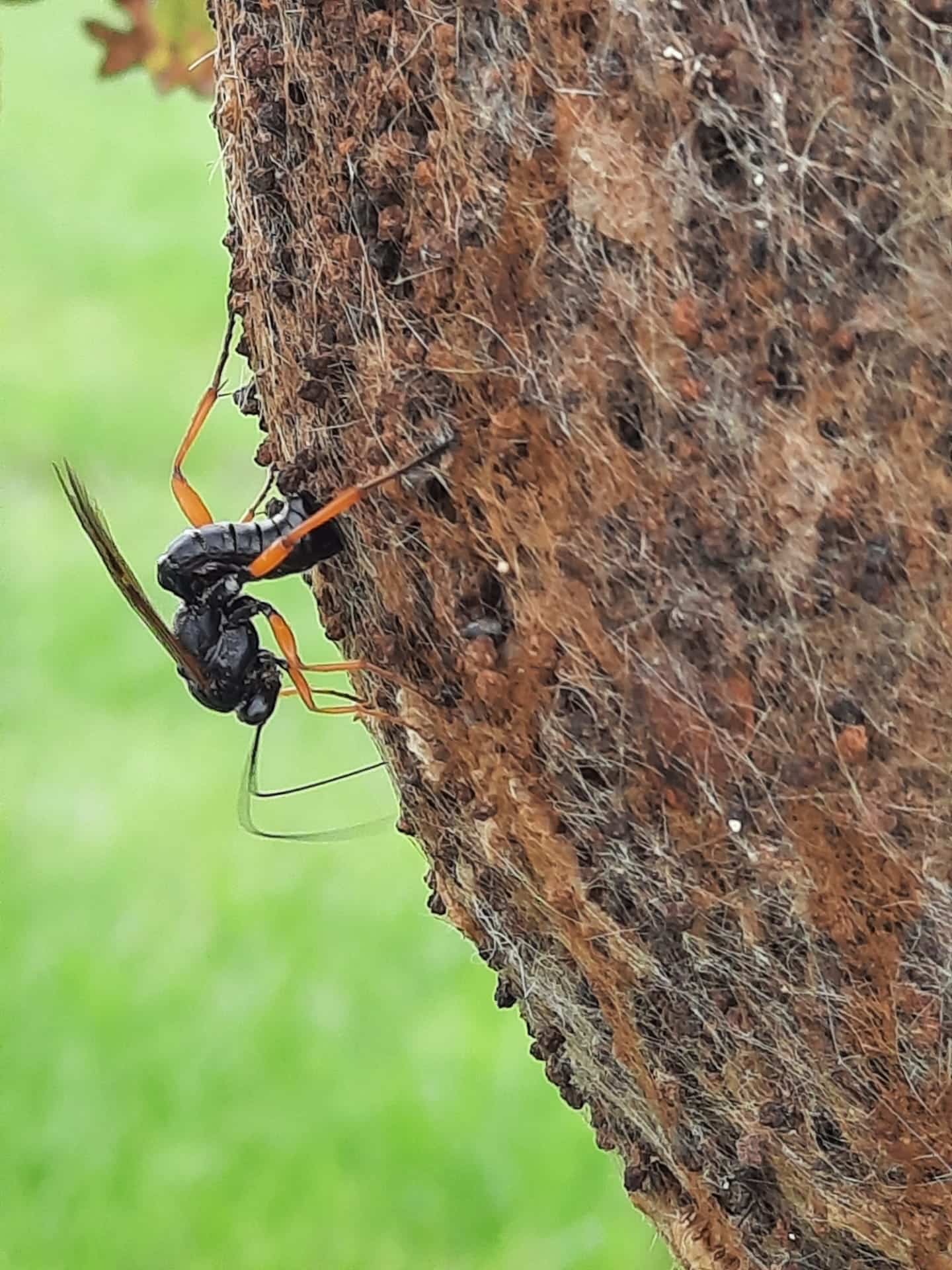First results of our field experiments
Our first results indicate that both tits and parasitic wasps and flies may play an important role in mitigating nuisance caused by the oak processionary caterpillar.
In the past year, for the LIFE project, 360 nest boxes were installed and 57 verges were monitored.
The first results of the tit experiment are promising: we found nesting material in 68% of the nest boxes that were installed last autumn, and in 46% of them we also found eggs and/or chicks. A quick calculation based on the data for the province of Antwerp tells us that tit chicks in that province consumed about 450,000 caterpillars and insects as part of the project, including probably a large share of oak processionary caterpillars.
It is therefore not surprising that we counted the largest and greatest number of nests of oak processionary caterpillars in locations where there were no nest boxes. Nest boxes thus seem to prevent extremes. This supports our expectation that the tit is an efficient natural enemy of the oak processionary. We hope to be able to substantiate this statistically in the coming years through more extensive research.
The road verge experiment, in which we sow verges with seed mixtures to attract parasitic wasps and flies and compare different types of verges, continued this summer. We removed three caterpillar nests from the trees at each test location, with the help of an aerial platform and the necessary protective clothing. The collection of more than 150 nests is now periodically checked in the lab for flying moths and parasites. This way we learn which parasites live in the nests and which type of verge management attracts the greatest number of parasites. We have already encountered several parasites, including Pales processionea, Pimpla processionea and Carcelia iliaca. In the nests collected in the province of Antwerp, we found an average parasitization rate of no less than 70% so far (additional butterflies and parasites my still appear), which shows that parasites have a great potential to limit outbreaks of oak processionary caterpillars. In addition, the parasitization rate between verges ranged from 8% to 97%. We hope to be able to link this variation to certain roadside (management) types soon, so that in the future we can manage our roadsides in such a way that they attract a large number of parasitic wasps and flies.
